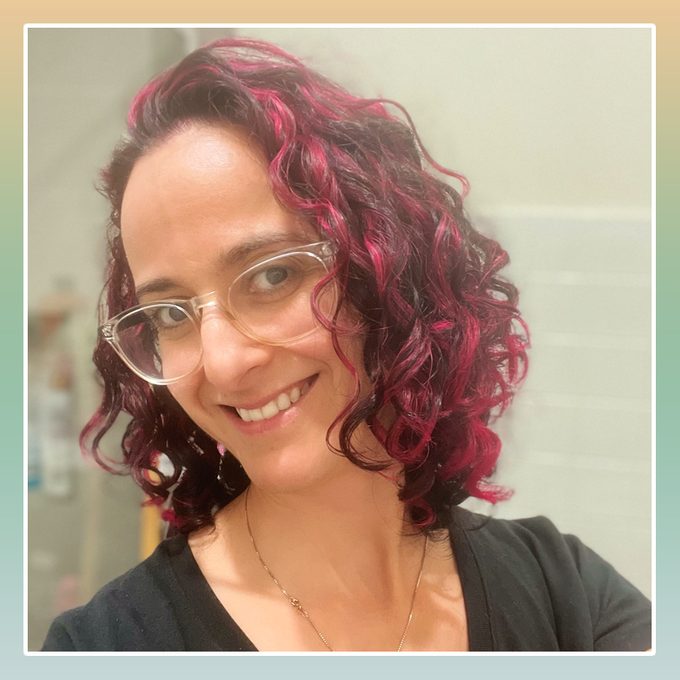I Had an Asthma Attack in My 20s, the Worst One in Years
Updated: Jun. 21, 2021
One woman shares what it was like to have a severe asthma attack in her 20s, and how she finally found the right treatment for her symptoms.

Adult asthma
Asthma is often thought of as a childhood disease, but while some people do seem to grow out of the respiratory condition, many others continue to experience asthma symptoms in adulthood, including about 20 million adults in the United States, according to the Asthma and Allergy Foundation of America. Asthma symptoms can change with age, and adults may need different treatments. One such asthma patient is Mandy Herbet, an editor and mother in Melbourne, Australia. Here, she shares how her asthma has changed since she was a kid and how she’s learned to live with her asthma as an adult.
What an asthma attack feels like
It was a slow day at the photo booth where I worked, so my boss suggested I clean out some old cabinets and drawers. It seemed like they hadn’t been touched since the kiosk opened years before, and there was a ton of dust.
I didn’t think much about it; I just worked at it until it was time to take the day’s money to the bank.
On the way back to the kiosk, I suddenly felt my throat closing and realized the dust had triggered an asthma attack. This was no ordinary attack—it was an emergency.
There was no way I could make it back to my bag, which held my inhaler, before I blacked out from lack of oxygen. I spotted a pharmacy nearby and struggled to make it inside.
The pharmacist saw the problem, immediately gave me a puffer for free (thanks, Australian health care system!), and sent me to a nearby doctor, who quickly gave me more medication via a nebulizer, a portable machine that aerosolizes medicine so you can inhale it.
After a few minutes, my breathing returned to normal.
It was a really frightening experience. I’d had asthma since I was a kid, but as a twentysomething adult, I hadn’t had a bad attack like this in years.
Once I could breathe normally again, I returned to work. I was impressed and grateful that I made it back at all, but my boss—who didn’t have asthma—was very unimpressed that my bank trip had turned into a medical emergency.
Growing up with asthma
I was first diagnosed with asthma at the age of 6.
It started with a cough that progressively worsened overnight. My worried father took me to urgent care, which referred us to a doctor. After seeing how badly I was struggling to breathe, the physician sent me directly to a hospital.
We never found out exactly what triggered my asthma—it might have been sparked by a cold virus. I ended up spending a week in the hospital, most of it under an oxygen tent. (Yes, that’s really how they treated asthma in the ’80s.)
The whole process was scary, but mostly I remember feeling terribly homesick.
My asthma remained fairly severe as I grew up, and I had to be on guard for any sign that an attack might be starting. Not only did this impact my daily life—I couldn’t play sports with my friends—but it also limited my goals and dreams.
Perhaps my biggest disappointment happened in my 20s, when I applied to work on a cruise ship as a photographer. They turned me down at the last moment due to my asthma. They told me they weren’t willing to risk dealing with this health condition.
Finding the right asthma treatment
I worried that I always would be held back by uncontrolled asthma, but my amazing doctor finally found a medication that really worked for me.
We made an asthma treatment plan, and I started taking Symbicort, a combination of a steroid and a long-acting bronchodilator (a medication that opens the airways and prevents spasms). It works both as a daily preventative and as a rescue inhaler during an attack.
I also have a second rescue inhaler, Ventolin, in case I need more help.
It can be tricky to use a traditional inhaler during an attack and to know how much is left in it. Which is why I’m glad I switched to an “accuhaler.”
This type of inhaler is breath activated. As soon as I put my mouth over the mouthpiece, it releases a premeasured dose of the medication. It comes loaded with 60 doses and has a counter on it, so I can see exactly how many I’ve used.
I’ve made some lifestyle changes too. I am careful to monitor my allergies during spring and autumn, and I ensure I stay indoors during bushfire season and on really windy days. Asthma awareness is generally high in Australia, so there’s a lot of fuss made about air quality and conditions that may impact people with asthma.
Every year, without fail, I get the flu shot. The last thing I want is to get the flu and be laid low for weeks on end.
The combination of medication and these changes has allowed me to effectively manage my asthma, and I haven’t had a severe attack in several years.
I do still feel the effects of the illness, though. Any time I get a cold or flu, it causes my asthma to flare up, worsening my symptoms and making my recovery longer.
What an asthma attack feels like now
At age 41, I no longer get the stereotypical wheezing, coughing, and gasping type of asthma attack. They tend to be subtler.
I find myself feeling absolutely exhausted, the kind of fatigue that can’t be explained by a lack of sleep. I’ll struggle to get enough air, as if I’ve been exerting myself even when I’m sitting quietly.
I have to fight off the panic that follows, reminding myself that all I need to do is get to my inhaler.
Living a normal life
On some days, living as an adult with asthma feels relentless, like I’ll never be free to do what I want. But then I remember how far I’ve come and that I’m not the only one dealing with this.
While a lot of kids do grow out of their asthma (and I hope my son does), adult asthma is a chronic illness that I wish more people would talk about. It is something that has to be monitored for life, but with the right medication and lifestyle changes, it’s totally possible to live a normal, happy life.
—As told to Charlotte Hilton Andersen











